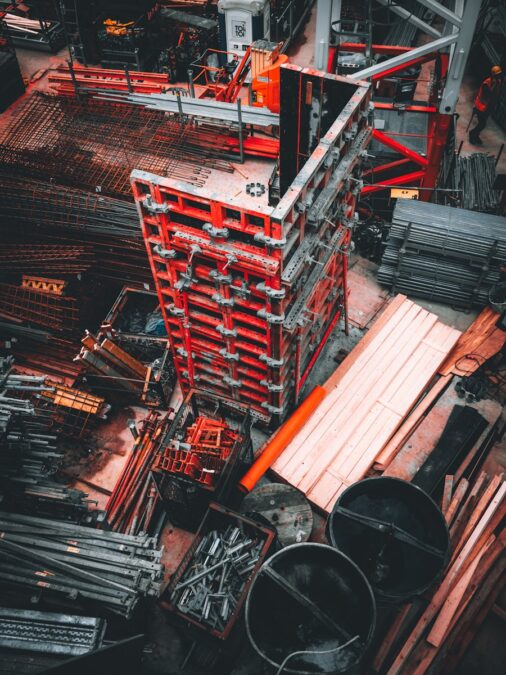The Importance of Choosing Sustainable Materials
Recycled Content: Building with the Past for a Greener Future
The selection of sustainable building materials is crucial for minimizing the environmental footprint of construction projects. One of the most effective strategies is incorporating recycled content into building materials. In regions like Saudi Arabia and the UAE, where construction is booming, using recycled materials not only reduces waste but also conserves natural resources. Materials such as recycled steel, concrete, and glass can be repurposed from demolished structures, offering both environmental and economic benefits.
Recycled content reduces the need for virgin materials, thereby decreasing the energy consumption and greenhouse gas emissions associated with material extraction and processing. For business executives and mid-level managers in the construction industry, adopting recycled materials can lead to significant cost savings and enhanced sustainability credentials. Moreover, utilizing recycled content supports circular economy principles, promoting resource efficiency and waste reduction.
Incorporating recycled materials also aligns with global sustainability standards and certification programs, such as LEED (Leadership in Energy and Environmental Design). Projects that achieve high levels of recycled content can earn points towards certification, enhancing their marketability and attractiveness to eco-conscious clients. For entrepreneurs and project managers, leveraging recycled content is a strategic move towards building greener, more sustainable structures.
Low-VOC Paints: Enhancing Indoor Air Quality
Low-VOC (Volatile Organic Compounds) paints are another essential component of sustainable building materials. Traditional paints contain high levels of VOCs, which can off-gas harmful chemicals into the indoor environment, affecting air quality and human health. In the Gulf region, including cities like Riyadh and Dubai, the use of low-VOC paints is gaining traction as part of broader efforts to create healthier, more sustainable living and working spaces.
Low-VOC paints emit fewer toxic fumes, contributing to improved indoor air quality and reduced health risks for occupants. This is particularly important in residential and commercial buildings where people spend a significant amount of time. For business leaders, specifying low-VOC paints in construction projects can demonstrate a commitment to occupant health and well-being, enhancing the building’s appeal and value.
Moreover, low-VOC paints are available in a wide range of colors and finishes, offering the same aesthetic versatility as traditional paints without the environmental and health drawbacks. For mid-level managers and project planners, integrating low-VOC paints into building specifications is a straightforward yet impactful way to enhance sustainability and comply with environmental regulations.
Sustainably Harvested Wood: Preserving Forests and Biodiversity
Sustainably harvested wood is a key sustainable building material that helps preserve forests and biodiversity. This type of wood is sourced from forests managed according to rigorous environmental and social standards, ensuring that logging practices do not deplete forest resources or harm local ecosystems. In Saudi Arabia and the UAE, where wood is a prized material for both structural and aesthetic purposes, choosing sustainably harvested wood is essential for responsible construction.
Forests certified by organizations such as the Forest Stewardship Council (FSC) are managed to maintain biodiversity, protect water resources, and support the livelihoods of local communities. For business executives, specifying FSC-certified wood in construction projects can enhance their corporate social responsibility profile and meet the growing demand for sustainable products. Moreover, sustainably harvested wood can be used in a variety of applications, from structural beams to interior finishes, providing both functionality and beauty.
In addition to environmental benefits, sustainably harvested wood often features superior quality and durability, reducing the need for frequent repairs and replacements. For entrepreneurs and project managers, this translates into lower lifecycle costs and increased project value. By prioritizing sustainably sourced wood, construction projects can achieve a balance between aesthetic appeal, functionality, and environmental stewardship.
Innovative Practices in Sustainable Construction
Green Construction Techniques: Beyond Materials
Incorporating sustainable building materials is just one aspect of green construction. Innovative construction techniques also play a critical role in minimizing the environmental footprint of building projects. In Saudi Arabia and the UAE, advancements in green construction practices are setting new standards for sustainability and efficiency. Techniques such as modular construction, prefabrication, and the use of renewable energy systems are revolutionizing the industry.
Modular construction involves assembling building components off-site in a controlled factory environment, which reduces waste, enhances quality control, and shortens construction timelines. Prefabrication, similarly, involves creating parts of a building in advance, which are then transported and assembled on-site. These methods not only reduce material waste but also improve construction efficiency and reduce on-site disturbances. For business leaders, adopting these techniques can lead to significant cost savings and faster project completion.
Furthermore, integrating renewable energy systems, such as solar panels and wind turbines, into construction projects can significantly reduce the building’s operational carbon footprint. In regions like the Gulf, with abundant sunshine and wind resources, renewable energy systems are a viable and sustainable option. For mid-level managers and project planners, incorporating renewable energy solutions into building designs can enhance energy efficiency, reduce utility costs, and support national sustainability goals.
Blockchain Technology: Ensuring Transparency and Traceability
Blockchain technology is emerging as a powerful tool for ensuring transparency and traceability in the selection of sustainable building materials. By recording every transaction and movement of materials on a secure, decentralized ledger, blockchain can provide verifiable proof of sustainability claims and certifications. In the Gulf region, where sustainability and innovation are key priorities, blockchain is being explored to enhance the credibility and accountability of green construction practices.
For business executives, adopting blockchain technology can enhance trust and transparency with stakeholders, including clients, regulators, and investors. By providing a tamper-proof record of material sourcing, blockchain can help ensure that only sustainably sourced and certified materials are used in construction projects. This level of transparency can also support compliance with environmental regulations and standards, reducing the risk of legal and reputational issues.
Moreover, blockchain can facilitate the efficient management of supply chains, ensuring that materials are sourced, transported, and utilized in the most sustainable manner. For entrepreneurs and project managers, leveraging blockchain technology can lead to improved operational efficiency, reduced costs, and enhanced sustainability outcomes. By embracing this innovative technology, construction projects can achieve new levels of transparency, accountability, and sustainability.
Leadership in Sustainable Construction: Driving Change and Innovation
Leadership and management skills are critical for driving change and innovation in sustainable construction. Business executives and mid-level managers play a vital role in setting the vision, strategy, and culture for sustainability within their organizations. In regions like Saudi Arabia and the UAE, where construction is a major economic driver, strong leadership is essential for advancing green building practices and achieving sustainability goals.
Effective leadership involves fostering a culture of innovation and continuous improvement, encouraging teams to explore new materials, technologies, and practices that enhance sustainability. For business leaders, this means staying informed about the latest trends and developments in sustainable construction, investing in research and development, and promoting a collaborative approach to problem-solving. By championing sustainability, leaders can inspire their teams to embrace green building practices and deliver high-quality, environmentally responsible projects.
Additionally, leadership in sustainable construction requires a commitment to education and training. Mid-level managers and project planners must be equipped with the knowledge and skills to implement sustainable practices effectively. For entrepreneurs, investing in professional development and certification programs can enhance their team’s capabilities and ensure the successful execution of green building projects. By prioritizing education and continuous learning, construction companies can build a workforce that is prepared to lead the industry towards a more sustainable future.
Conclusion: Embracing Sustainability in Construction
The selection of sustainable building materials, such as recycled content, low-VOC paints, and sustainably harvested wood, is essential for minimizing the environmental footprint of construction projects. In regions like Saudi Arabia and the UAE, where construction activity is high, these materials offer significant benefits for both the environment and the economy. By incorporating sustainable materials, adopting innovative construction techniques, and leveraging advanced technologies like blockchain, construction projects can achieve greater sustainability, efficiency, and transparency.
For business executives, mid-level managers, and entrepreneurs, investing in sustainable building materials and practices is a strategic decision that can enhance their competitive advantage and support corporate sustainability goals. By prioritizing sustainability, construction companies can meet the growing demand for eco-friendly buildings, comply with environmental regulations, and contribute to global efforts to combat climate change.
In conclusion, embracing sustainability in construction is not only a moral imperative but also a smart business strategy. By selecting sustainable building materials and adopting green construction practices, companies can create healthier, more resilient buildings that benefit both people and the planet. Strong leadership, continuous innovation, and a commitment to sustainability are key to driving the construction industry towards a more sustainable and prosperous future.
—
#SustainableBuilding #GreenConstruction #EcoFriendlyMaterials #RecycledContent #LowVOC #SustainableWood #SaudiArabia #UAE #ConstructionInnovation























